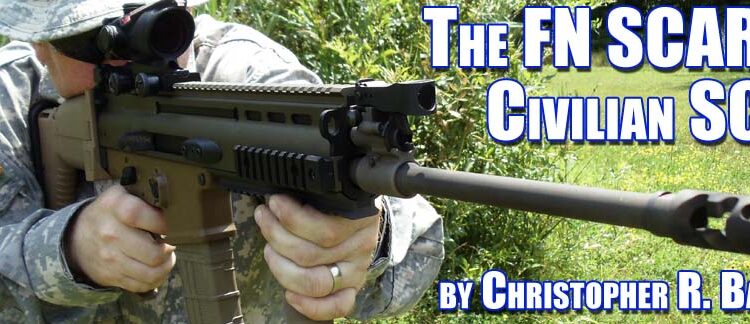By Christopher R. Bartocci
Few firearms in recent history have been given the publicity and attention of the SCAR program. The weapon system has been touted as being the finest weapon system in the world, being designed to the precise criteria of the most elite soldiers and sailors this world has known; the United States Special Operations Command. In its later couple years the SCAR has seen some falling from grace. The MK16 had been cancelled but the MK17 SCAR Heavy continues and will eventually replace several weapons in the SOCOM arsenal. Many reasons have been given for this. However, the MK16 may just indeed have a different path than SOF. It is for sure the MK16/SCAR will be in the Individual Carbine competition. This is a full and open competition for the replacement of the M16/M4 carbine in the U.S. military. There has also been international interest in the SCAR rifle so international military sales are to be expected whether it is for SOF or for an entire Army.

Commercial consumers read about the development of the advanced military weapons in magazines and see television shows showing advanced armaments. Two of the most prolific firearms of the last 10 years have been the Heckler & Koch 416 and the FN SCAR. But it has not been until the last year that both companies introduced them to the civilian market. They are expensive but you are getting the real thing.
FN introduced their SCAR 16S as the commercial version of the MK16 SCAR or Special operations Combat Assault Rifle. The main differences are quite simple; the 16S is semiautomatic only and has a legal commercial 16 inch barrel.
The FN SCAR/16S
The SCAR is a short-stroke, piston-operated firearm. Gas is bled from the gas port in the barrel into an expansion chamber created by the gas block and the piston. The piston is driven back and strikes the end of the bolt carrier driving the bolt carrier to the rear unlocking the bolt, extracting and ejecting the fired cartridge case. When the bolt carrier reaches the rearmost position the action spring propels it forward stripping the next round from the magazine, chambering the round and then the bolt locks ready for the next shot. The SCAR has an adjustable valve that may allow for more gas to be vented making the weapon function in extreme and adverse conditions. This differs from the direct gas impingements system in that it does not blow hot gasses back into the bolt carrier causing fouling. Also the bolt and carrier run much cooler since the hot gasses are not blown directly into the bolt and carrier. This assists in the springs and smaller parts lasting longer due to no excessive heat. The SCAR has a much slower cycle rate than the standard M4. The M4 is 750 to 950 rounds per minute as compared to 625 rounds per minute. This is a matter of opinion as to whether the higher cycle rate is more desirable than the slower. The SCAR makes use of high impact resistant polymers. Modularity is seen in both the stock and barrel.
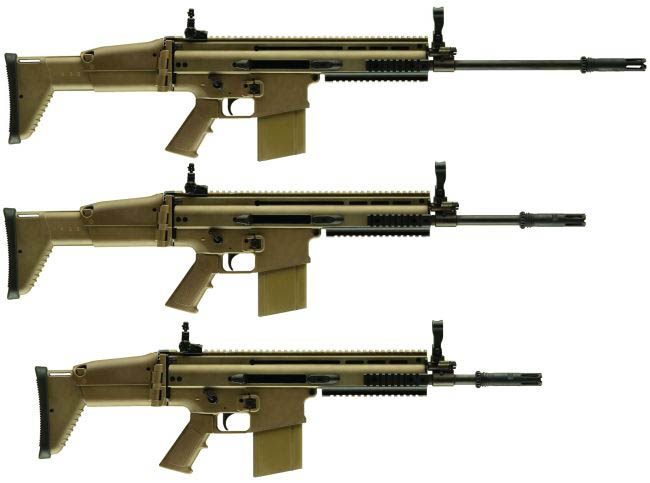
The high impact polymer stock is extremely compact. The stock is not only telescopic (6-positions) and easily adjusted to the individual shooter but it folds to the side for even more compactness. While the stock is folded the weapon can still be fired as the stock does not obstruct the ejection port of the rifle. Additionally there is a cheek piece that can be adjusted for use with higher mounted optics.
The lower receiver is manufactured of high impact resistant polymer. A standard M16/M4 pistol grip is used. There is a larger trigger guard and the safety/selector lever and the magazine release button are ambidextrous. The bolt catch is in the same familiar M16/M4 location and works in the same way.

The receiver is manufactured from aluminum alloy. Its modular design allows easy barrel changes to allow the weapon to be custom built for the particular mission at hand. The hard coat anodized receiver has a continuous Mil-Std 1913 top rail from end to end. Rails are added to the 3, 6 and 12 o’clock positions enabling the use of any modern accessory. The stock assembly and the lower receiver assembly assemble into the receiver. The upper receiver houses the charging handle as well. The charging handle can be installed from either the left or right side. The handle goes through a notch in the receiver into the bolt carrier. There is a fired cartridge case deflector that also works as a lock for the folding stock. Due to the low cycle rate of the SCAR, there is little need for a deflector.
On the backup rear sight, the aperture is the same as the standard M16/M4 in that it is L-shaped and has a long and short range aperture. It has a windage drum on the left and right side that allows adjustments to be made without any special tools. By rotating the elevation knob the rear sight is fully adjustable for elevation as well as windage. This is a very well designed and simple sight.
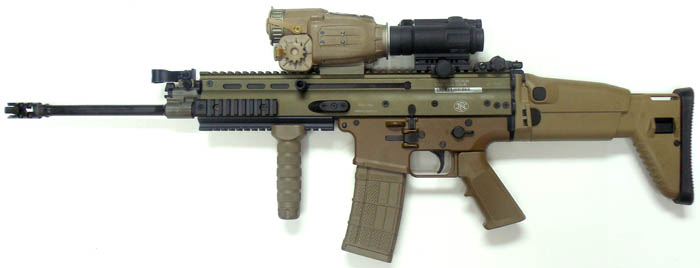
The barrel is cold hammer forged for extra durability and reliability. Both the bore and chamber are chrome plated and rifled with the 1 turn in 7 rifling twist that will stabilize 55 to 77 grain projectiles. The gas block is pinned to the barrel. The 16S comes standard with an FN designed compensator. The machine gun grade barrel will undoubtedly have a long service life. The barrels for the MK16 come in lengths of 10, 14 and 18 inches. The 16S comes with a 16-inch barrel. According to FN, the barrel can be changed by the operator within 5 minutes with less than 1 MOA of change in original point of impact. There is a folding front sight attached to the gas block that has a lock and must be disengaged. The front sight is fully protected by a shroud and is adjusted in the same fashion as the standard M16/M4 rifle.
The bolt carrier is a heavy single piece of steel and is similar to that of an M16/M4 in that it is multi lugged though the bolt is manufactured stronger with a more aggressive extractor. The SCAR uses a larger, more durable firing pin retainer pin, which will not bend or become damaged.
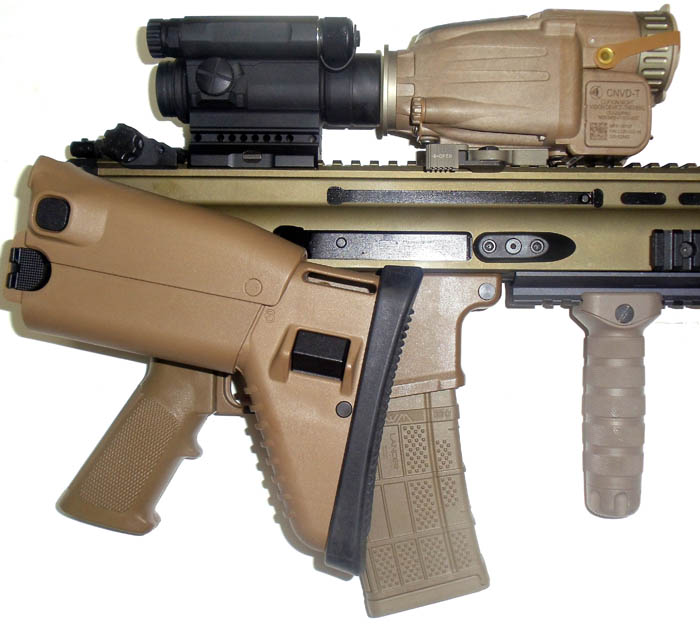
The rifle comes with a steel magazine but at the same time this rifle arrived for testing, so did Lancer Systems’ new AWM (Advanced Warfighter Magazine) magazines. I have followed the development of the L5 magazine since Lancer worked with Colt Canada (then Diemaco) on the green magazine that was translucent. The program was moving forward quite well. After Diemaco was bought out by Colt Defense the magazine went through a specific Mil-Spec test which it had failed, involving Deet. Colt cancelled the program to the disappointment of Lancer and the Diemaco engineers who worked on the project. Lancer felt, and justly thought, they had a great product worth them funding and putting to market on their own, which they did. Several generations of the magazine have been produced, increasing the strength and reliability of the metal feed lips being molded into the magazine body as well as improved methods to disassemble going from a special tool to just a cartridge tip. Back in 2005 I had the opportunity to meet the good people at Lancer. I saw their prototype magazines and arranged with them to supply100 magazines to a local SWAT team for them to test and give back test data to Lancer. To this date they are still in heavy use with no issues. Many changes have been made to the base plate as well. The new AWM offers several enhancements over the standard L5. First it can be used in non-M16/M4 magazine wells such as the HK 416 and the FN SCAR. The magazine may be disassembled with only a bullet tip and there is also a major enhancement to the metal feed lips with significantly more material to engage into the polymer and metal tabs to accept the strip loader guide. Also the AWM magazine is offered in translucent as well as solid colors such as black, OD, forest green and flat dark earth. They are made in 20- or 30-round capacities. This was an ideal time to try out these new magazines as well.
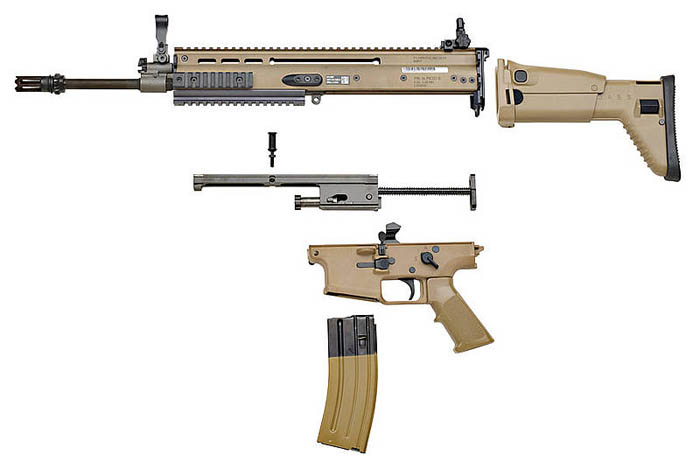
The test rifle was put through its paces. More than 1,200 rounds were fired of Silver State Armory 5.56mm 55 grain full metal jacketed ammunition. The rifle was not cleaned through any of the testing and it was not lubricated either. There were no malfunctions experienced. It was curious how hot the receiver got; this was attributed to how the barrel fits into the receiver. The magazines all functioned flawlessly which was expected based on my previous experience with Lancer magazines. The rifle was extremely compact when folded and easy to carry. I had the opportunity as well to fire a MK16 selective fire rifle. The cycle rate was certainly slower than any automatic 5.56mm caliber rifle I had previously shot. It was certainly easy to control but in this authors opinion too slow. High cycle rate can be viewed in different ways. One as controllability and the other is ammo conservation. Under controlled circumstances this is good. In real world when engaging multiple targets the higher cycle rate can make a major difference in the time it takes to engage your target. Perhaps a better compromise would be 825 to 850 rounds per minute. But this is a subjective opinion; everyone will have different thoughts on it.

The FN SCAR 16S will surely be a popular gun amongst collectors and connoisseurs of fine military weapons. The hefty price tag will keep it from only the most serious shooters. Considering the cost of the development of this weapon system and its return from the U.S. Government the price is understandable. The rifle is everything FN claims: it is very well made, with as few as possible parts and it is reliable. The SCAR 16S has all the potential to be a police patrol carbine except the main road block would be the price. The Individual Carbine tests will be very interesting. The FN SCAR has an excellent chance to take this. However the true goals of the test are not very clear. Would they be looking for an entirely new weapon or one that they can modify existing weapons? If they are looking to upgrade the existing fleet the chances of this system is slim due to no parts commonality with the existing system and no way to convert. Other systems such as the SIG 516, HK 416, LWRCI and ADCOR Bear carbines would fit this bill. But if they are looking to start from the ground up the FN SCAR will be the carbine to beat. The U.S. government already has a substantial investment in this system.
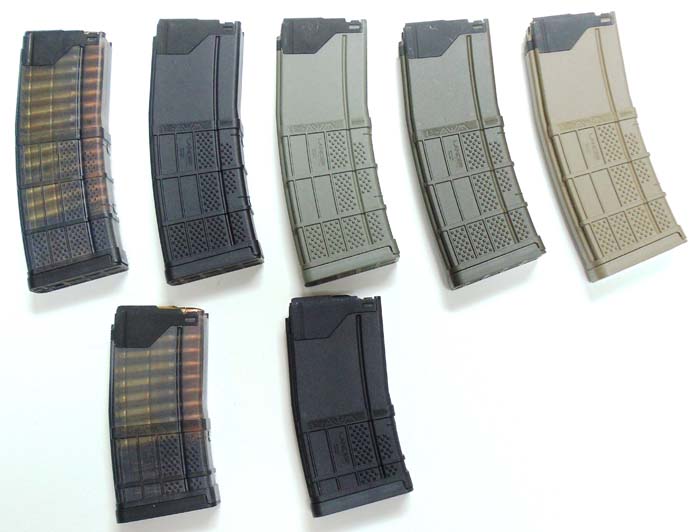
| This article first appeared in Small Arms Review V16N3 (September 2012) |



